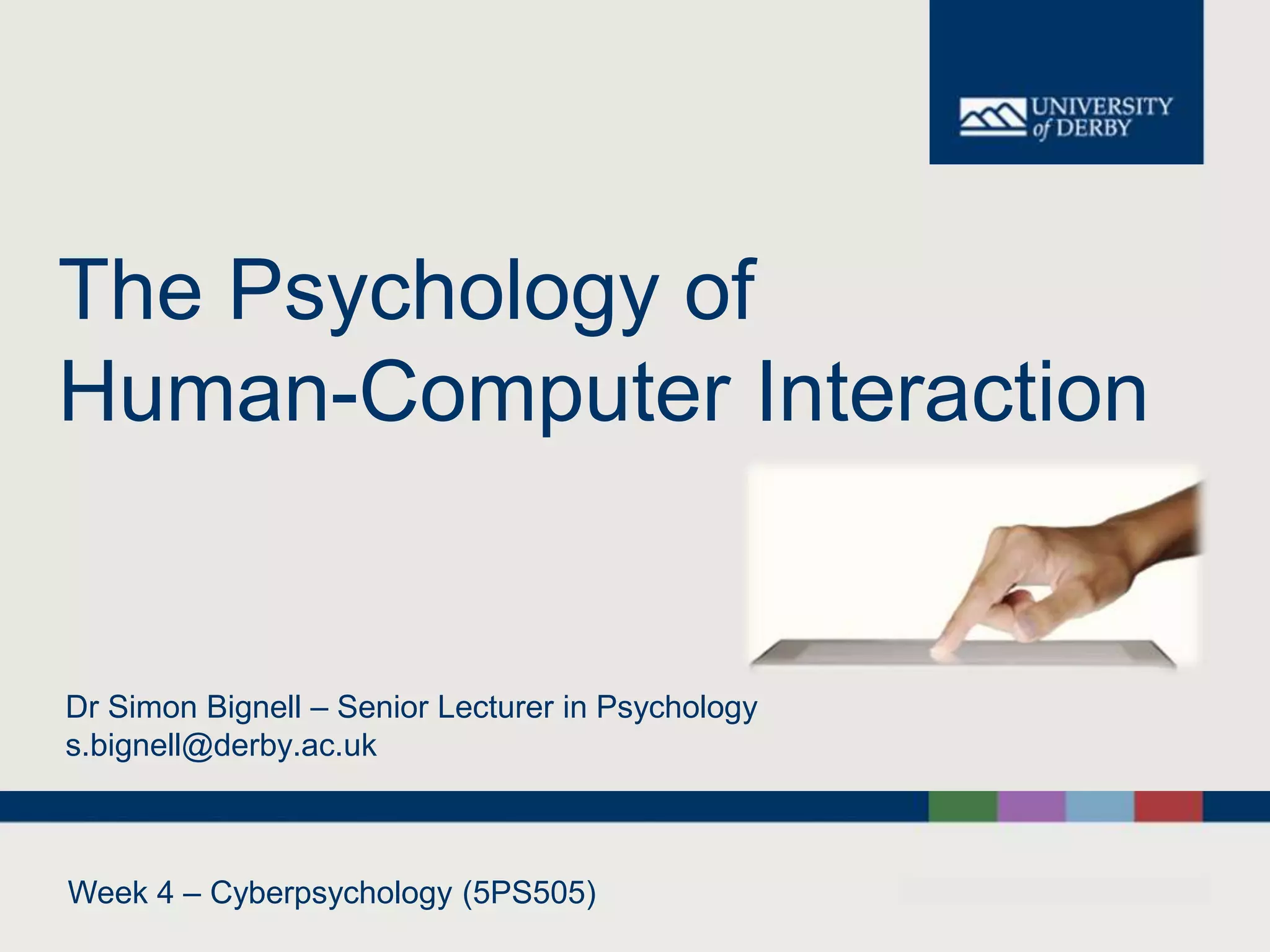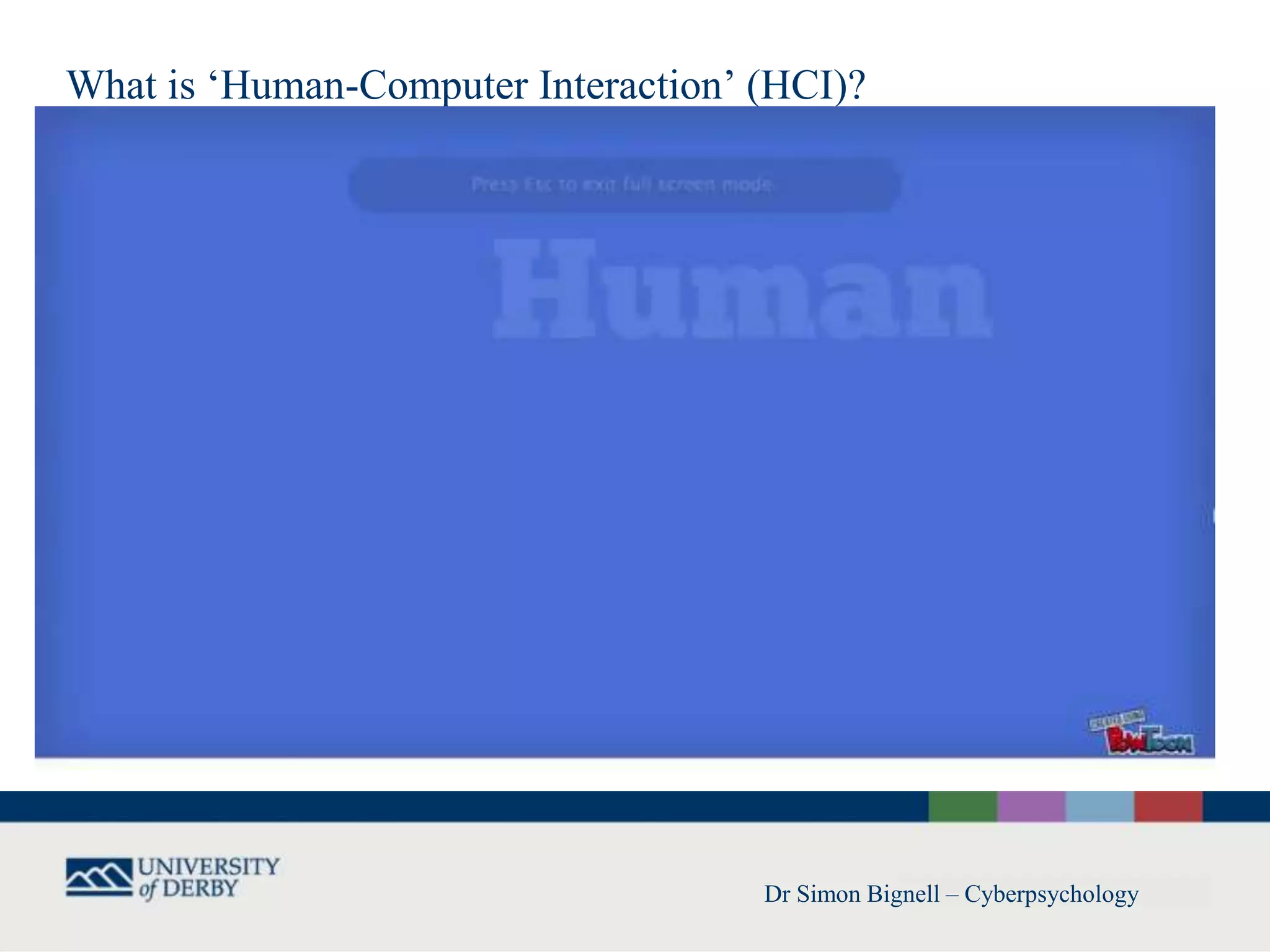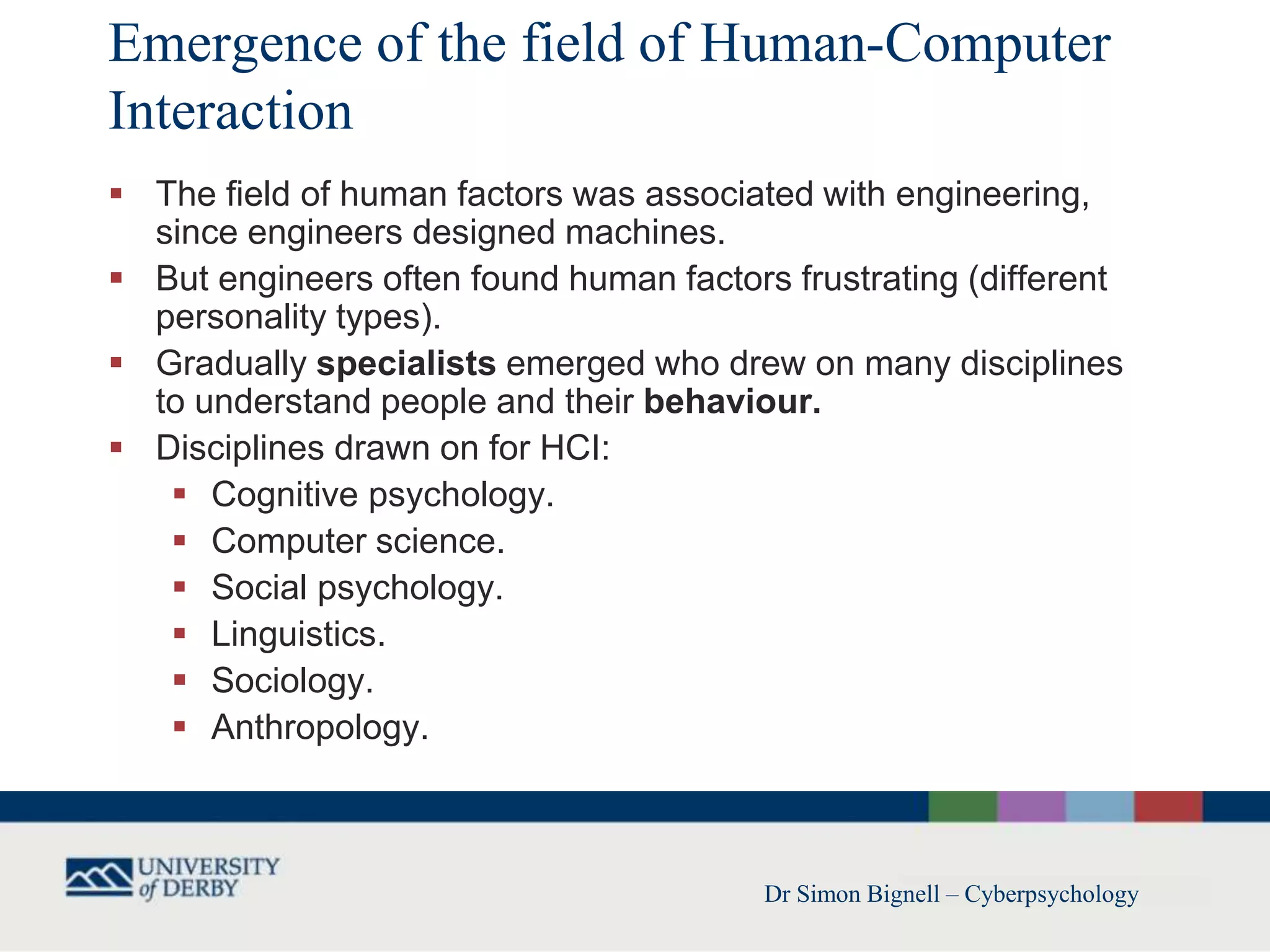The document outlines the importance of human-computer interaction (HCI) from a psychological perspective, examining how users interact with technology and the design implications. It discusses various concepts including user and system models, interfaces, and the evolution of HCI, highlighting the necessity of designing user-friendly systems that accommodate human capabilities. Additionally, it addresses challenges such as information overload and the need for effective communication in computer-mediated interactions.









































